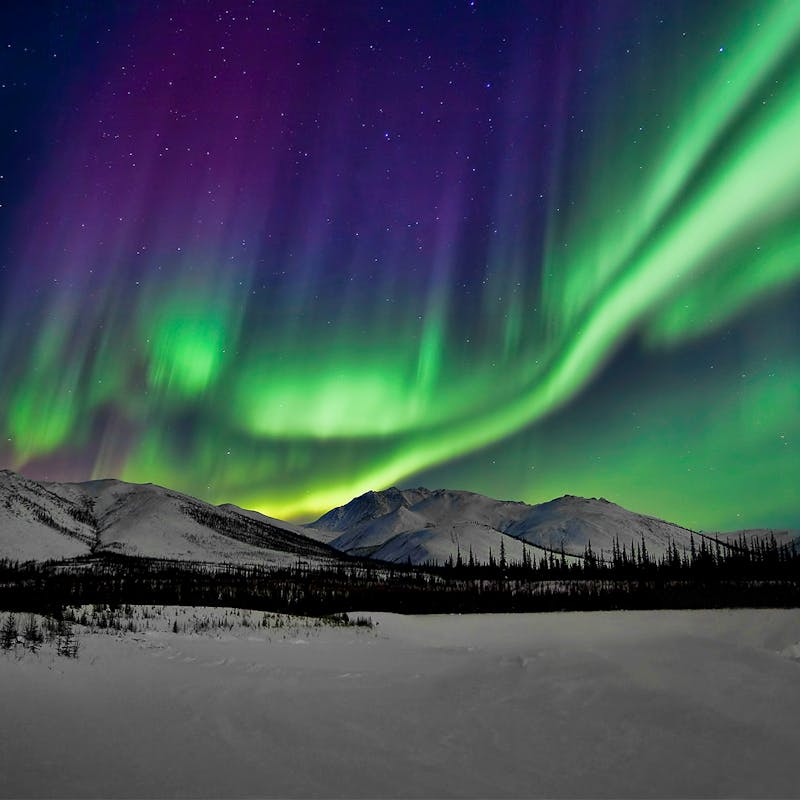Lapping against Alaska’s northern edge is the Beaufort Sea, and along its northwestern coast is the Chukchi Sea. These frigid waters are home to walrus, whales, seabirds, seals and polar bears. In fact, the two polar bear populations that live in, and are named after, these seas make up about one-tenth of the global polar bear population.
The Southern Beaufort and Chukchi Sea populations of polar bears, however, are experiencing significant changes due to climate-induced habitat alterations. These shifts are influencing their behavior, health and long-term survival prospects. The U.S. Fish and Wildlife Service released draft estimates earlier this year for both sub-populations. While the numbers may not be surprising, they are telling and provide a clear signal that polar bears are in trouble.
Southern Beaufort Sea Polar Bears
The Southern Beaufort Sea population, spanning Alaska and Canada's Arctic territories, has faced notable challenges and are one of the most imperiled sub-populations of polar bears in the world. These polar bears saw a sharp decline of approximately 40% during the 2000s, primarily due to low survival rates among cubs and adults between 2004 and 2006. By 2010, the population stabilized at around 900 individuals. Now, the recent draft 2025 population estimate shows an even further decrease in the population to 819 bears.
Chukchi Sea Polar Bears
The Chukchi Sea population occupies Alaska's northwestern coast and extends through the Chukchi Sea into Russia. This population is estimated at 2,937 bears, though FWS acknowledges that confidence in this number is not high. Chukchi bears are difficult to count, are not frequently counted and the range associated with this estimate is 1,500 to 6,000 bears. While this population is considered relatively stable, it is increasingly at risk of harm from pathogens. This exposure is attributed to changes in their diet — historically dominated by seals — caused by sea ice decline. With less sea ice to support them, these bears have been spending more time on land where they feed on whale carcasses, vegetation and bird eggs instead.
Despite being released in 2025, both population estimates rely on data from 2016 and before. With a rapidly changing arctic, Defenders of Wildlife is advocating for more regular field studies to be performed to better track and document population health.
Change in behaviors due to Climate Change
Both Southern Beaufort and Chukchi Sea polar bears are spending more time on land during summer months. The percentage of polar bears summering onshore increased from 5% to 30% in the southern Beaufort Sea (left graph) and 10% to 50% in the Chukchi Sea. Both populations spent 60-70 days onshore by 2020 (right graph), an increase of more than 30 days since the 1980s.
Climate change and oil and gas development are major threats to Alaskan polar bears. As global temperatures rise, sea ice is melting at unprecedented rates. This leads to shorter hunting seasons for bears and longer periods where bears must remain on land. With less ice, polar bears are increasingly stranded on land for extended periods, leading to malnutrition, lower reproduction rates and higher mortality among cubs.
At the same time, oil and gas development in Alaska introduces additional stress to polar bear populations. Drilling and exploration expand into polar bear habitats disturbing the physical environment — even potentially threatening onshore polar bear dens — and contributing to the climate crisis through the release of greenhouse gases. The construction of oil rigs, roads and pipelines can fragment habitats, impede bear movements, harass bears with industrial noise and create barriers that further isolate polar bear populations. Most terrestrial denning critical habitat in Alaska is either open to leasing or already leased by oil companies.
Additionally, increased human activity in these regions can lead to more frequent human-wildlife conflicts and increased risks from oil spills, which could have devastating long-term effects on the local ecosystem. The combined impacts of climate change and industrial development create a double threat to the survival of polar bears in Alaska, making it increasingly difficult for these iconic animals to adapt to their rapidly changing environment.
A decline in Arctic Sea ice has also resulted in an increase in the navigation season within Arctic waters. Previously ice-covered sea routes are now opening up in summer, allowing access for commercial shipping. A primary concern associated with increased shipping is the increased air, noise and water pollution, including the potential for oil spills. Increased shipping is now an emerging issue for polar bear conservation.
Now is the Time: Advocate for Polar Bears
The draft 2025 population estimate is a warning for these animals. Polar bears across Alaska face a serious threat with climate change impacting their sea ice habitat. Now, more than ever, is the time to advocate for sustainable, clean energy.
Contact your local representatives and urge them to champion policies to support sustainable, renewable energy for a healthier future. At home, limit your emissions by carpooling, shopping local and supporting wind and solar power projects when possible!
Our arctic species can’t handle more greenhouse emissions warming their home and further threatening their existence.












